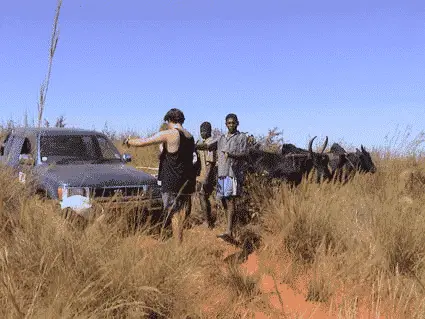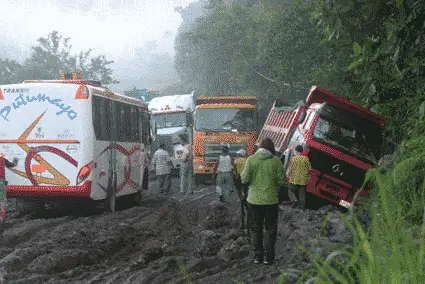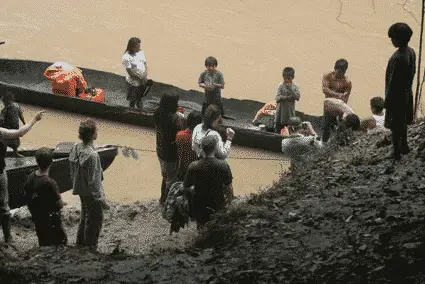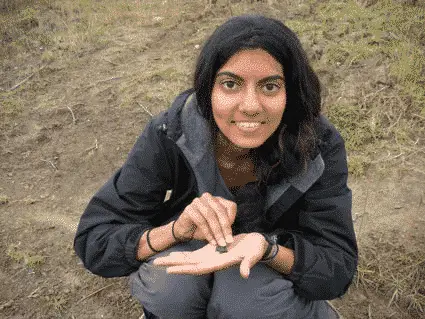October 25, 2009
Conservation biologist Stuart Pimm has a long and brilliant career as a scientist. Author of numerous research papers and books, he has given lectures in distinguished forums across the world. Yet he is never happier than as a teacher and mentor.
In this blog entry Pimm addresses what it takes to be a young explorer in the field, interviewing some of his protégés about the high and low points. He finds that much of the excitement and challenges of getting started have not changed over the past forty years. It all begins with a willingness to pay your dues.
Exploration 101: The Dream Job Begins with a Slog
By Stuart L. Pimm
Special Contributor to NatGeo News Watch
The Seven Stars is not the oldest pub in Derby, England. Nearby, the Dophin dates from 1580–a hundred years earlier. But in the late 1960s, the Seven Stars served draft Newcastle Brown ale. It was worth hitchhiking home to Derby from Oxford at the weekend. Beer in the south of England was terrible.
As I elbowed my way to the bar, a vaguely familiar face introduced himself, a conversation ensued, and seven months later, I drove with him and ten others overland to Afghanistan.
My career as an explorer had begun.
That it almost ended that summer–I came back so sick that I had to miss a year of university–is another story.
The story I write here is how one starts a career in exploration–and in this century, rather than in the last one, when I started mine.
So I turned to three remarkable young explorers: Dr. Luke Dollar is a National Geographic Society Emerging Explorer–and a former student of mine. The other two are undergraduates at Duke–Varsha Vijay and Ciara Wirth.
“How did you get started,” I asked them.
Luke was first. “I spent three years cleaning up lemur poop at the Duke Lemur Center. I ingratiated myself in every way with Professor Patricia Wright and eventually was invited to do equally menial stuff in Madagascar.” (Like me, Pat is a former member of the National Geographic Committee for Research and Exploration.)
“I was the first up, the last down, and at the end of the day the dirtiest, most tired, most sweaty of everyone.”
From that experience, Luke returned year-after-year, working first for Pat, then on his own, with the island’s largest predator–the fossa.
Almost every year, Luke takes teams to his study sites with Earthwatch–an organization which people pay to do field research for a couple of weeks each northern summer.
Each year, Luke needs the same kind of assistance that Pat needed–someone who is prepared to start by doing the very basic stuff in the field and what is often quite numbing organization to get there.
(I remembered from the first expedition I led, how much time we spent on calculating how many rolls of toilet paper we’d need for 14 people in the field for several months. We didn’t think it would be easy to buy in Afghanistan.)


Varsha got her start helping Luke for one summer in Madagascar.
Then came Ecuador. This was a chance to work with Ciara Wirth, other students from Duke, and Save America’s Forests. Varsha did not hesitate.
Ciara and Varsha worked with Waorani Indians in a remote part of the Amazon.

I told them: “You fly to Quito, then fly across the Andes into the Amazon lowlands, then take a bus for a day — or longer if it gets stuck in the mud — then two days by canoe.”
“Madagascar, the Amazon … two of the most amazing places on Earth! How could I say no?” Varsha replied. And after the first summer there, she took a year off from Duke to continue her work in the field. Ciara came back for a second summer too.
“What were the high points and what were the low points?” I asked them.
“Food”–was near the top of Varsha’s list. ”Growing up in a Hindu family, we did not eat meat. Going from that to eating monkey parts and every kind of rodent was a challenge.”
And the language. Ciara had traveled extensively with her very adventurous parents and spoke Spanish. Varsha did not. Remarkably, both have learned the language of the Woarani Indians.
Initially, they did so in a remarkable way–by talking over Skype in the evenings whenever their Woarani guide, Manuela, came into Puyo and would log onto the computer in an Internet café. The transition from rain forest nomad to using the latest communications technology happens within a generation.

“How did you make friends?”
Varsha’s story was that she regularly joined the women in the traditional villages in making chica–manioc “beer.” “You chew the manioc for a few minutes, spit it back into the bowl, grab another mouthful, and start chewing again.” And yes, it’s a communal bowl.
Lorem ipsum dolor sit amet, consectetur adipiscing elit. Ut elit tellus, luctus nec ullamcorper mattis, pulvinar dapibus leo.
“So what went wrong?” All of us have stories of bad experiences.
Ciara’s project depending on mapping–and the essential tools were the GPS units she had taken with her. She left them in a taxi–threatening the viability of the entire project.
After a frantic night and a visit to the police station–” a scary place at night”–they found the taxi and within hours were on their way.
When they arrived, “it was one of the greatest experiences Varhsa and I had the entire summer–a really beautiful community,” Ciara said.
Through all the challenges, all the things that go wrong, Luke and Varsha were all excited about going back into the field. And Ciara is there now, working in Africa.
Luke’s final advice: “Keep your mind open–and be prepared for anything.”
Copyright 2025 Saving Nature | fGreen Theme powered by WordPress
